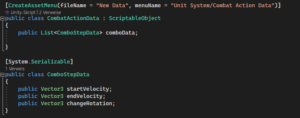Hey there, fellow game developers! Today, I’m excited to discuss an upgraded scene structure that has taken my Unity projects to new heights. By implementing a master scene and utilizing additive loading for additional scenes, I’ve unlocked a range of benefits that I can’t wait to share with you. Let’s dive in!
What is a all that about ‘Master Scene’?
A master scene acts as a central hub or container for all other scenes in your game. It serves as the starting point for your game and contains essential elements such as the player character, UI canvas, audio manager, and global scripts. Instead of having all gameplay content within a single scene, you can break it down into multiple scenes, each focusing on a specific area, level, or feature.
And why should I care about such a structure?
Excellent observation! Below, I have compiled a list of key advantages for you to consider:
- Modularity: By separating your game content into individual scenes, you gain modularity. This allows you to easily modify, add, or remove specific sections without affecting other parts of the game. It promotes better collaboration among team members, as they can work independently on different scenes without conflicts.
- Performance Optimization: Additive scene loading allows you to load only the necessary content as you progress through the game. It enables you to manage memory efficiently by loading and unloading scenes on demand. This approach reduces load times, optimizes resource usage, and provides a smoother gameplay experience.
- Scene Management: With additive loading, you can dynamically transition between scenes seamlessly. For example, you can load a new level without disrupting the existing gameplay. This flexibility enables the creation of open-world games, where players can freely explore different regions or levels without encountering loading screens.
These were essentially the core reasons behind my decision to transition to this structure.
Bottom Line
Utilizing a master scene and loading additional scenes additively offers numerous advantages in game development. It enhances modularity, optimizes performance, and provides efficient scene management. By structuring my project in this manner, I am able to achieve a more organized and scalable workflow, resulting in a better player experience. So, embrace the power of a master scene and additive loading, and take your game development to the next level!
